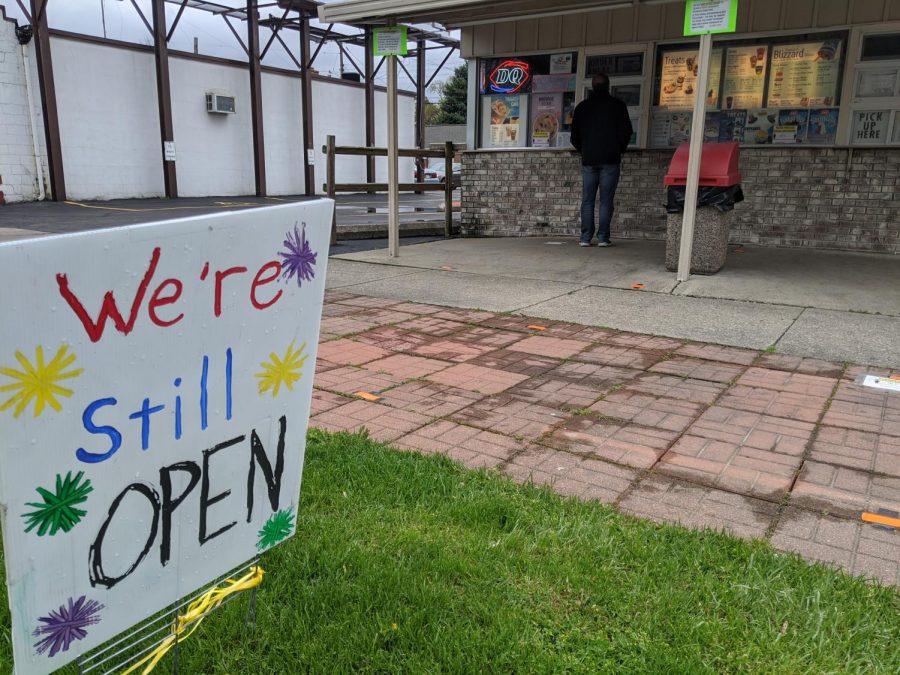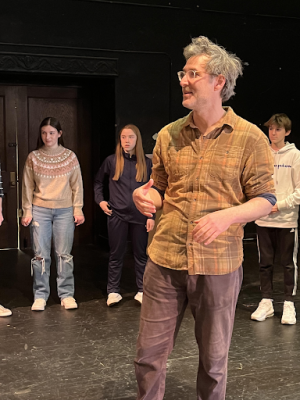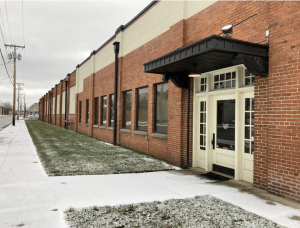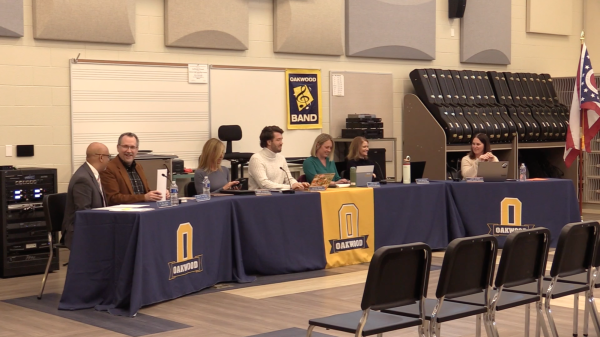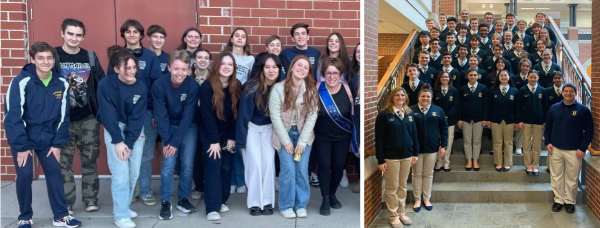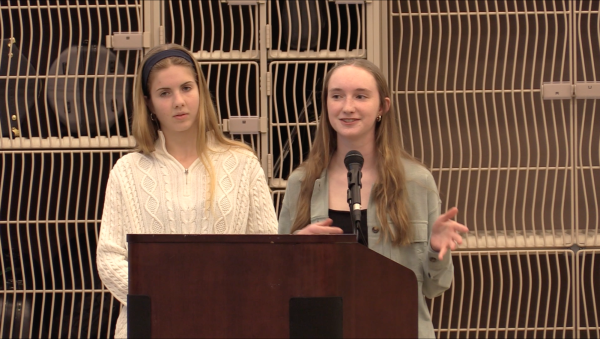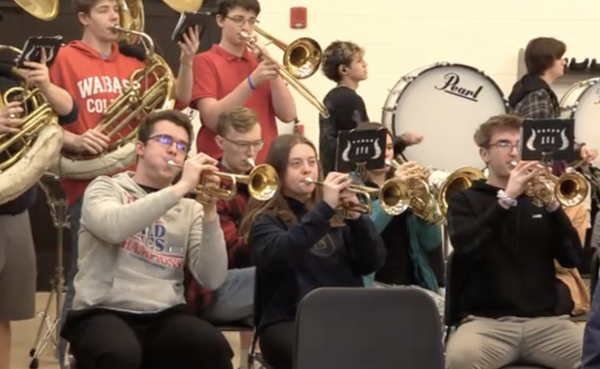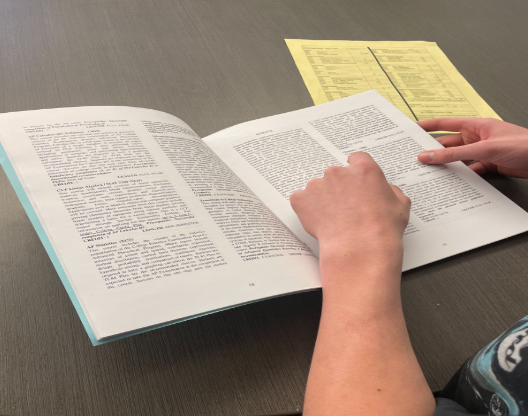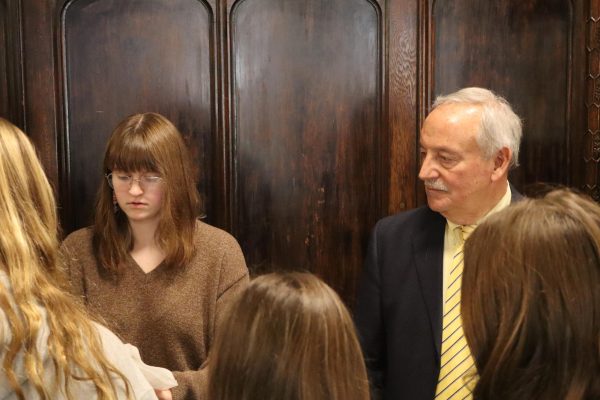Post-pandemic culture
Examining possible changes in normal life after coronavirus
New normal: In response to recommendations and orders from the CDC and state and federal governments, some businesses tape markers six feet apart for consumers to stand on in order to prevent the spread of coronavirus. After visiting multiple businesses in an attempt to photograph people occupying these markers: however, so few people were leaving the house to visit these establishments that there was no example of the markers in use. Photo by: Sophia Shannon
April 30, 2020
Following a massive pandemic that has shut down most of the country, there is bound to be a lingering effect on society as we know it. The novel coronavirus has served as a shock to the system, and as a result many things will likely change in the U.S. as the country slowly tries to reach a new normal lifestyle
“It’s not going to happen like flipping a switch and everything’s going to be back to normal,” Gov. Mike DeWine said in an April 10 press briefing. “I wish I could do that. I wish the reality of life was that.”
DeWine, among others, has come up with a plan to gradually reopen Ohio communities.
“On May 1, we’re going to have a healthcare opening,” DeWine said in an April 27 press briefing. “All health procedures that can be done that do not require an overnight stay in the hospital, we will be able to move forward with those operations or procedures.”
In addition, on May 4 general offices, manufacturing, distribution and construction will reopen.
“We are asking companies as they go back into their office space to continue to [ask people to work at home] as much as possible,” DeWine said in an April 27 press briefing. “At a minimum, no more than 50% of the fire code and if possible use appointment setting to limit congestion.”
The last part DeWine revealed of the plan was for consumer and retail services to open on May 12 with proper precautions.
“People have to be kept apart,” DeWine said in an April 27 press briefing. “If they can’t physically be kept apart there needs to be a screen or something between them.”
Once these changes are made, the public will be expected to alter some behaviors and expectations to ensure that the virus is gone for good. One such change is the acceptance or even expectation of wearing masks in public, a practice that has previously been unpopular in the country.
“These masks are actually being viewed in the studies that are being done as yet another weapon to get back to normalcy,” Dr. Amy Acton, the director of the Ohio Department of Health, said in an April 13 press briefing. “We are going to be looking at a year of using these in new ways.”
Masks will be expected especially in retail situations, although it will not be mandated after a public outcry against being forced to wear them.
“When you are a customer in an Ohio business, you should wear a face covering,” Lt. Gov. Jon Husted said in an April 29 press briefing. “But you are not required to do it.”
Health precautions in the workplace and in schools will also be a main focus going forward after returning to a relatively normal life.
“I can’t imagine business is going to open up without employees wearing one of these [masks],” DeWine said in an April 14 press briefing. “It’s that type of drilling down and trying to be as safe as we can that everyone is going to have to do. Whatever your business is you’re going to have to figure it out. That’s what universities are going to have to think about. That’s what K through 12 is going to have to think about.”
DeWine is also considering options for the upcoming school year to ensure that students and staff remain healthy.
“One option that was discussed with me with a number of superintendents and teachers was the possibility, and there’s no decision about this obviously, but the possibility of having a blended system this fall,” DeWine said in an April 20 press briefing. “That might mean some distance learning as well as some in-person learning.”
DeWine also offered options for a safe version of graduation for the class of 2020.
“First and most preferred is a virtual graduation,” DeWine said in an April 29 press briefing. “Second in preference would be a drive-in type of ceremony where a student would drive to a designated location at a designated time to get his or her diploma. Third in preference would be an event with ten people or less at a time who are and remain socially distanced where a graduate can receive his or her diploma.”
In addition, many people suspect that after seeing how quickly and severely hospitals became overloaded and inadequately equipped, more people will consider health care reform as an important issue.
“In order to fight viruses and other diseases, we need more research, funding, and manpower dedicated to this topic,” according to Judith Garber on Lown Institute’s website. “There is a serious need to lessen the pressure on health care institutions and clinicians to keep doing more.”
Historic precedent for this can be found in response to the Spanish Flu pandemic of 1918, which was relatively similar to the current COVID-19 outbreak.
“Nations took steps to consolidate healthcare, and to expand access to it, in the post-flu years,” Laura Spinney, author of “Pale Rider: The Spanish Flu of 1918 and How it Changed the World”, said according to Time.com. “This was a direct result of the pandemic, during which public health leaders had been either left out of cabinet meetings entirely, or reduced to pleading for funds and powers from other departments.”
As the pandemic continues, and even after it seems to have finished, it will be important to follow guidelines set by health and government officials to reduce the risk of another wave of cases.
“We can’t lose our discipline about the social distancing,” DeWine said in an April 29 press briefing. “There’s a reason that we did not really change the stay at home order. There’s a reason that we did not change the number of people that could gather together.”


